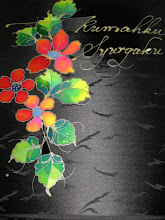Mural Introduction
A mural is any piece of artwork painted directly on a wall, ceiling or other large permanent surface.
History Of Mural
Murals of sorts date to Upper Paleolithic times such as the paintings in the Chauvet Cave in Ardèche department of southern France (around 30.000 BC). Many ancient murals have survived in Egyptian tombs (around 3150 BC)[1], the Minoan palaces (Middle period III of the Neopalatial period, 1700-1600 BC) and in Pompeii (around 100 BC - AD 79).
In modern times the term became more well-known with the Mexican "muralista" art movement (Diego Rivera, David Siqueiros, or José Orozco). There are many different styles and techniques. The best-known is probably fresco, which uses water-soluble paints with a damp lime wash, a rapid use of the resulting mixture over a large surface, and often in parts (but with a sense of the whole). The colors lighten as they dry. The marouflage method has also been used for millennia.
Murals today are painted in a variety of ways, using oil or water-based media. The styles can vary from abstract to trompe-l'œil (a French term for "fool" or "trick the eye"). Initiated by the works of mural artists like Graham Rust or Rainer Maria Latzke in the 1980s, trompe-l'oeil painting has experienced a renaissance in private and public buildings in Europe. Today, the beauty of a wall mural has become much more widely available with a technique whereby a painting or photographic image is transferred to poster paper or canvas which is then pasted to a wall surface (see wallpaper, Frescography) to give the effect of either a hand-painted mural or realistic scene.
Historical mural techniques
In the history of mural several methods have been used:
A Fresco painting, from the Italian word affresco which derives from the adjective fresco ("fresh"), describes a method, where the paint is applied on plaster on walls or ceilings. The Buon fresco technique consists of painting in pigment mixed with water on a thin layer of wet, fresh, lime mortar or plaster. The pigment is then absorbed by the wet plaster; after a number of hours, the plaster dries and reacts with the air: it is this chemical reaction which fixes the pigment particles in the plaster. After this the painting stays for a long time up to centuries in fresh and brilliant colors.
"A Secco" painting is done on dry plaster (secco is "dry" in Italian). The pigments thus require a binding medium, such as egg (tempera), glue or oil to attach the pigment to the wall.
"Mezzo-fresco", is painted on nearly-dry plaster, which is defined by the sixteenth-century author Ignazio Pozzo as “firm enough not to take a thumb-print”, so that the pigment only penetrates slightly into the plaster. By the end of the sixteenth century this had largely displaced the buon fresco method, and was used by painters such as Gianbattista Tiepolo or Michelangelo. This technique had, in reduced form, the advantages of a secco work.
Modern mural techniques
The development of digital wide format printers offered new time and cost effective production methods for printed murals and became an important alternative to actual, hand-painted murals in the last decade. Already existing murals can be photographed and then be reproduced in near-to-original quality.
The disadvantages of pre-fabricated murals are that they are often mass produced and lack the allure and exclusivity of an original artwork. They are often not fitted to the individual wall sizes of the client and their personal ideas or wishes can not be added to the mural as it progresses. The Frescography technique, a digital manufacturing method (CAM) invented by Rainer Maria Latzke addresses some of the personalisation and size restrictions.
Digital techniques are also used in advertisement. A "wallscape" is a large advertisement on or attached to the outside wall of a building. Wallscapes can be painted directly on the wall as a mural, or printed on vinyl and securely attached to the wall in the manner of a billboard. Although not strictly classed as murals, large scale printed media are often referred to as such.
Advertising murals were traditionally painted onto buildings and shops by sign-writers, later as large scale poster billboards.
Many rural towns have begun using murals to create tourist attractions in order to boost economic income. Colquitt, Georgia is one such town. Colquitt was chosen to host the 2010 Global Mural Conference. The town has more than twelve murals completed, and will host the Conference along with Dothan, Alabama, and Blakely, Georgia. In the summer of 2010, Colquitt will begin work on their Icon Mural.

No comments:
Post a Comment